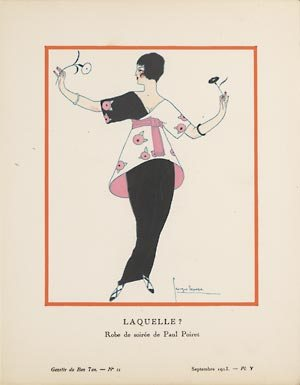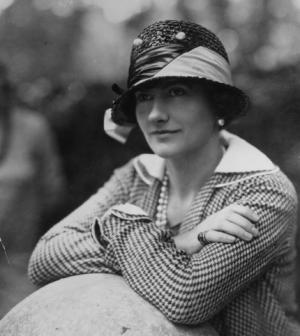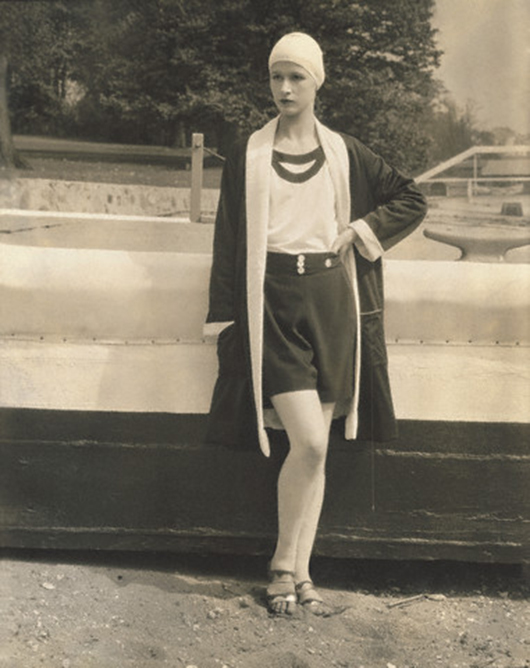Ahhh fashion…frivolous, fabulous and reeking of wealth and desire. That perfect mirror of the roller coaster of social and economic vistas that reveals much of the undercurrents of the 20th century. How did an Art Deco lampshade become a dress? How becoming is a dress shaped like a lampshade?
And what became of dressing like a lady?
what a figure and a place in the back to pop your teacup!

The fashions of the Edwardian Era, with a pronounced “S” silhouette and characterised by frilled bodice fronts, lace trims and extravagant flounces, soon gave way to the liberated and outrageously fluid garments of the Roaring Twenties. The Flapper as a fashion entity was born and the looser styles and flowing lines of the new look were accompanied by the industry’s emergence into the mass production of clothes and the novelty of ‘off the peg’ frocks, blouses and skirts in contrast to made-to-order.
Fabrics such as muslin, velvet, crepe-de-chine, wool crepe, chiffon, serge and tulle were popular and easily embellished with sequins. The Russian Ballet is credited with creating the upheaval in 1910 of modest and structured garments for women at the turn of the century. Orientalism, which was the name coined for the soft, richly sequined, highly patterned or floaty and often sheer creations worn on stage by the Company’s dancers, sent ripples of shock and awe through audiences who were thus intrigued by the translation into the latest garb.
Caroline Rennolds Milbank says “The year 1910 was a watershed for orientalism in fashion and the arts. In June, the Ballet Russe performed Scheherazade at the Paris Opera, with sets and costumes by Leon Bakst. Its effect on the world of design was immediate.”
As many have written of it, the clothes that excited fashionable women and to some extent men, certainly the male designers of the day, were part of a reimagined visual world encompassing more than just frocks and coats. Let’s look at some of the first eye-popping developments.
Paul Poiret, a Frenchman, designed with a new vision for pre-WW1 women and basically claimed that he had freed women from the corset directing them towards the brassiere as an alternative.
Poiret reconsidered clothing the female form after observing the manner of dressing the body used by the Greeks, Africans and the Japanese. Toga styled dresses for women, caftans and kimonos lead from his earlier inspiration from the Ballet des Russes costume templates. Flowing fabric was his ideal, so rather than tailoring a garment to fit a body he approached his design practice by creating fabric in simple shapes like the rectangle and triangle that celebrated simple gravity so they hung and draped from the shoulders to cascade and move elegantly. His designs dominated the fashion focus until 1929 when his fashion house was closed. His work as a visionary designer is well documented as a marriage with art itself and he is credited with developing the Art deco fashion plate.
Enter Coco Chanel, who sure knew how to make an entrance. With a cloud of smoke-laden disdain for the over-blown, over-dressed matrons and mademoiselles of the day keeping everyone as distant as a plume covered muslin-draped extravaganza of a hat, she would appear in a man’s boater even at the Races. A self-taught milliner by trade, Coco Chanel opened a hat shop in Paris for made-to-order designs inspired by the simple straw hats worn by men. A few ribbons or a flower feminised and revolutionised womens’ headgear, which gave birth to the cloche and the ‘fascinator’.
In The Allure of Chanel, Paul Morand recalls Gabrielle’s words: “The women I saw at the races wore enormous loaves in their heads, constructions made of feathers and improved with fruit and plumes. (…) In the grandstands, people began talking about my amazing, unusual hats, so neat and austere.”
So let’s get a little historical … or as it was, hysterical for what came next…fashionistas were divided….
And then ‘quelle horreur’ she started using the jersey fabric created for men’s underwear to make dresses, pullovers, skirts and jackets for her clients heralding the craze for draped layered and comfortable sportswear for women. Further ground-breaking and reputation smashing moves included the manufacturing of her trouser suits for the female form. Who doesn’t love a neat pant?
Jean Patou, was a true competitor for Chanel , continuing those trends. He, like Chanel had to suspend production due to the war and abandon his luxury gowns.
Make sure you look out for the fabulous fashions at Chelmsford Place Festival and our wonderful stallholders selling costumes and accessories.







